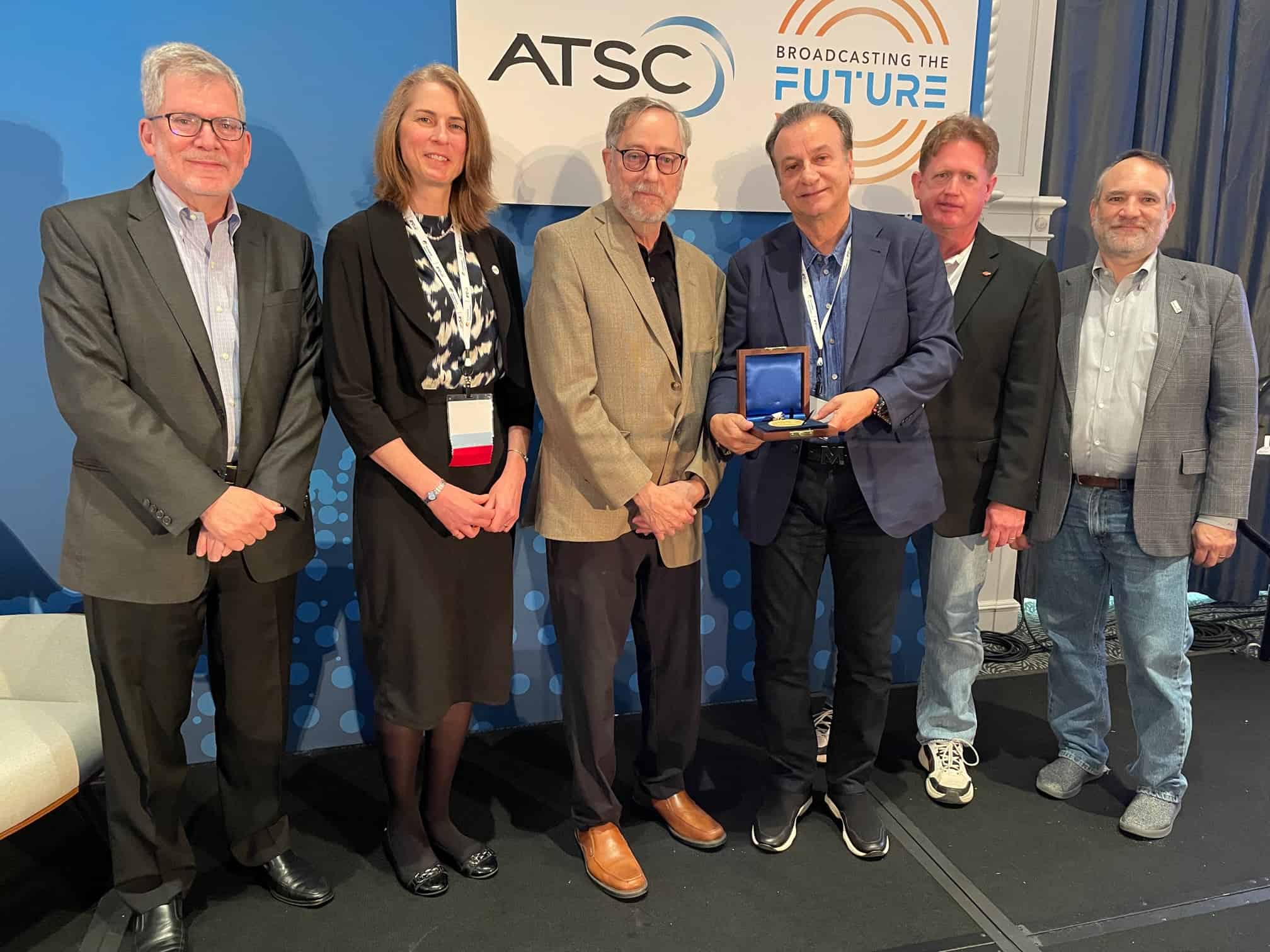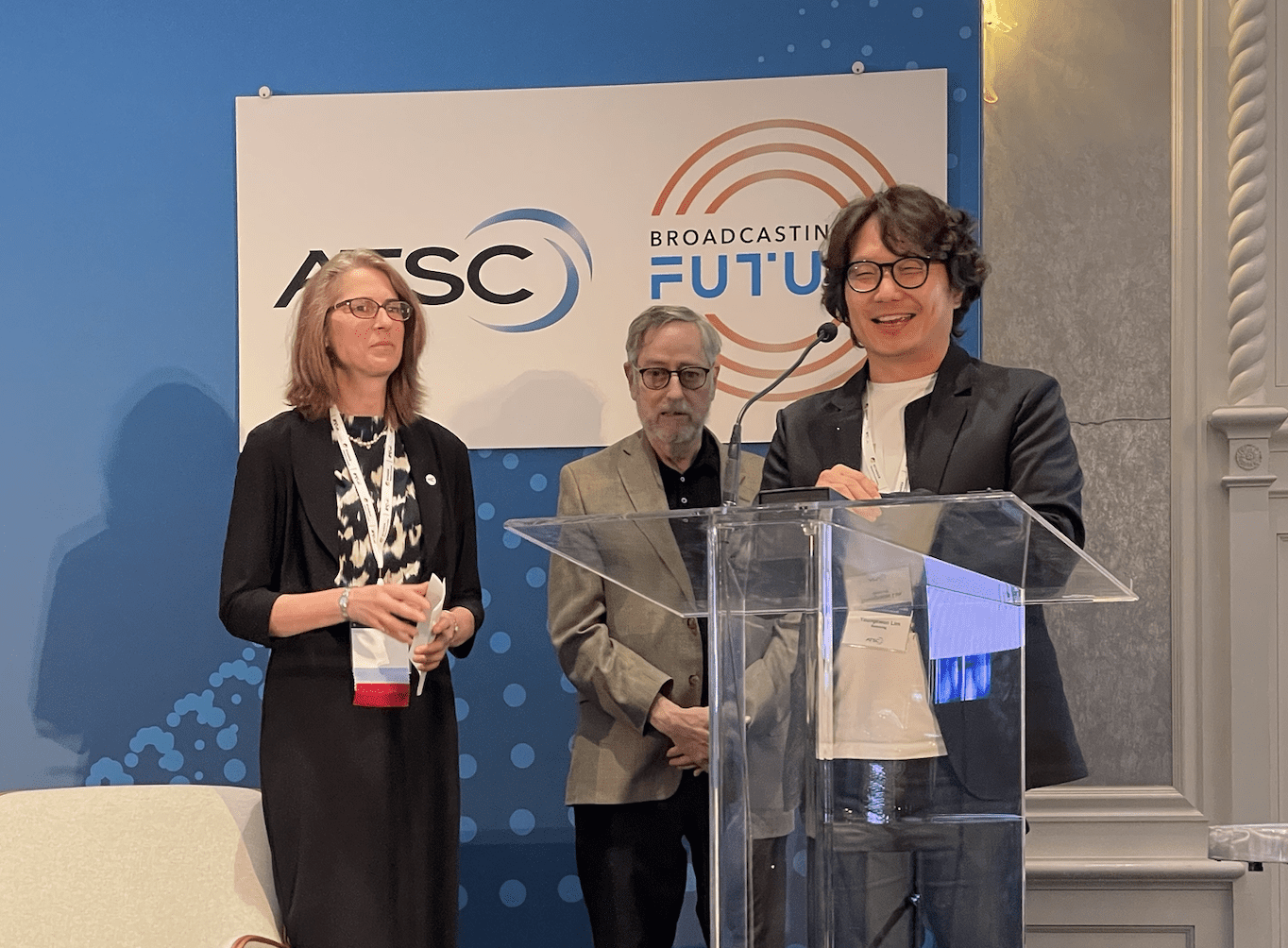ATSC Awards Highest Technical Honor to Samsung’s Dr. Youngkwon Lim
Group bestows Richer Industry Leadership Medal to Sony Electronics

DETROIT—The Advanced Television Systems Committee has awarded its highest technical honor, the 2022 Bernard J. Lechner Outstanding Contributor Award, to Dr. Youngkwon Lim, principal research engineer at Samsung Electronics.
ATSC also presented the Mark Richer Industry Leadership Medal to Sony Electronics for leadership in deployment of ATSC 3.0 technology.
Congratulating the honorees during this year’s NextGen Broadcast Conference, ATSC president Madeleine Noland said, “Dr. Lim manages the work of Specialist Group TG3/S33 in a quick professional manner, allowing the industry to move forward apace. With more than two dozen patents to his name, his valuable knowledge has been instrumental in helping ATSC develop cutting-edge signaling solutions and more.”
Noland also recognized Sony Electronics for their leadership in the deployment of ATSC 3.0, as it incorporates the ATSC 3.0 electronics into all its consumer TV models on the market in the United States. “Sony’s exceptional work on ATSC 3.0 development and implementation stand out in our industry and supports the successful rollout of NEXTGEN TV across the country,” Noland said.

ATSC’s 2022 Lechner Award recipient Youngkwon Lim has led the ATSC TG3/S33 Specialist Group on Management and Protocols since it was organized in 2013. TG3/S33 is the group responsible for the most technical documents of any specialist group in TG3 – 8 Standards and 3 Recommended Practices, including A/331 “Signaling, Delivery Synchronization, and Error Protection,” which is one of the most complex documents in the ATSC 3.0 suite of standards.
“ATSC 3.0 is a platform that can evolve over time, and S33 continues to play a pivotal role in ATSC, as the group tackles the myriad updates that improve A/331 and the other documents under its care. We are grateful for Young’s leadership in this critical piece of the ATSC 3.0 standard,” Noland added.
In addition to his service to ATSC, Lim has served as a Convener of the MPEG Systems Working Group and is well known for his expertise in Next-Generation Broadcasting and Multimedia Systems (Protocol, Delivery, Streaming). Lim has also been a key contributor to MPEG Media Transport (MMT) for delivery of multimedia over IP networks and digital broadcasting, and he has chaired multiple Ad-Hoc Groups in MPEG, including Systems Technologies for Volumetric Media, Omnidirectional MediA Format (OMAF), Video Decoding Interface and more.
Get the TV Tech Newsletter
The professional video industry's #1 source for news, trends and product and tech information. Sign up below.
“Dr. Lim’s experience in other Standards Development Organizations allows him to quickly align ATSC documents with external documents for a cohesive set of standards. His valuable knowledge has helped ATSC move forward with signaling solutions, and I appreciate his expert guidance of TG3/S33,” Noland added.
The Bernard J. Lechner Outstanding Contributor Award is bestowed once a year to an individual representative of the membership whose technical and leadership contributions to ATSC have been invaluable and exemplary. The title of the award recognizes the first recipient, the late Bernard Lechner, for his outstanding service to the ATSC.
Lechner was the retired Staff Vice President, Advanced Video Systems of RCA Laboratories. His 30-year career at RCA covered all aspects of television and display research, including early work on home video tape recorders in the late 1950s, extensive development of flat-panel matrix displays in the 1960s including pioneering efforts on active-matrix liquid crystal displays, advanced two-way cable TV systems and pay-TV systems in the early 1970s, electronic tuning systems and CCD comb-filters for TV receivers in the mid-1970s, automated broadcast cameras and CCD broadcast cameras in the late 1970s and early 1980s, to HDTV in the mid-1980s.
George Winslow is the senior content producer for TV Tech. He has written about the television, media and technology industries for nearly 30 years for such publications as Broadcasting & Cable, Multichannel News and TV Tech. Over the years, he has edited a number of magazines, including Multichannel News International and World Screen, and moderated panels at such major industry events as NAB and MIP TV. He has published two books and dozens of encyclopedia articles on such subjects as the media, New York City history and economics.

